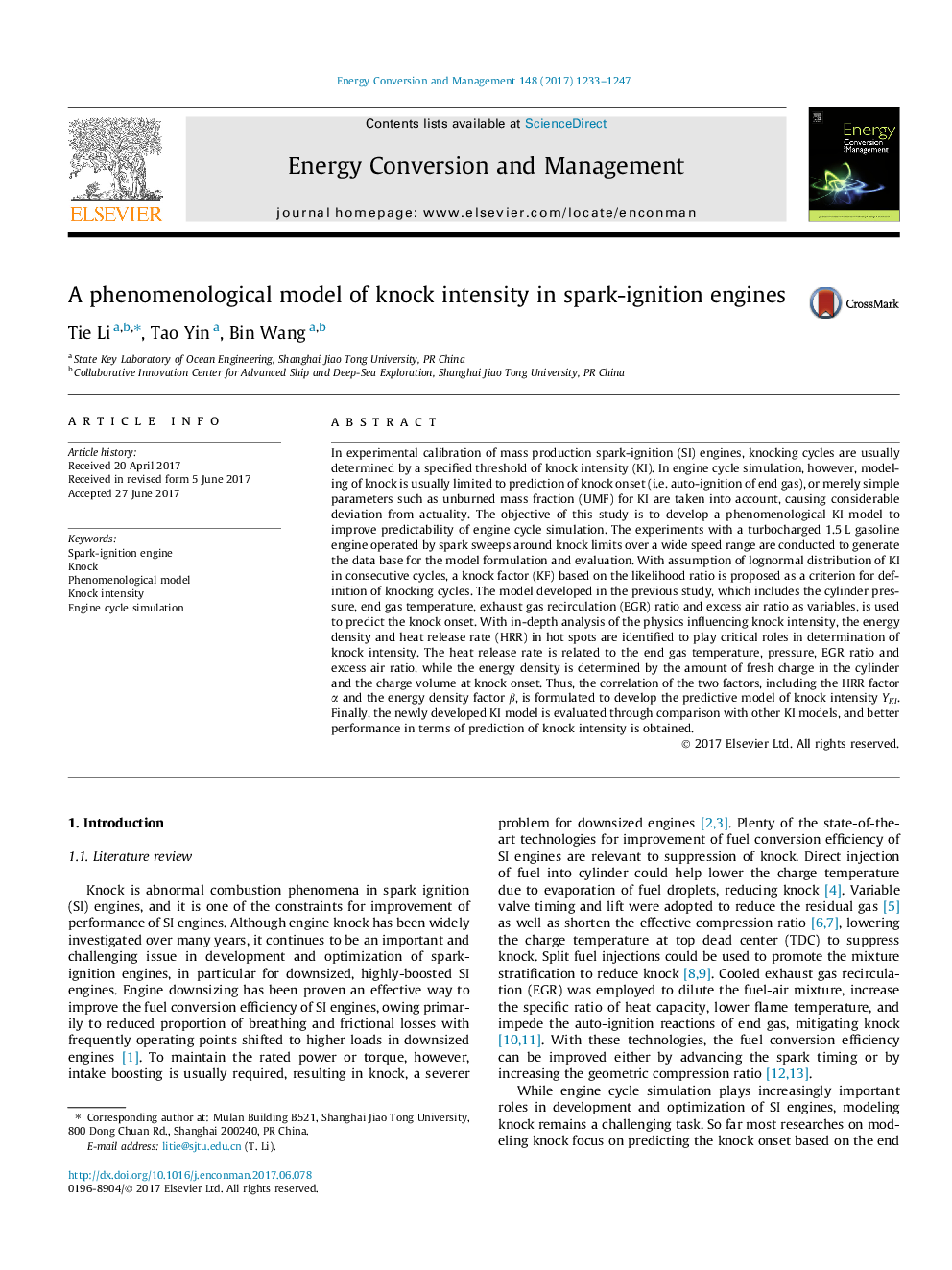| کد مقاله | کد نشریه | سال انتشار | مقاله انگلیسی | نسخه تمام متن |
|---|---|---|---|---|
| 5012554 | 1462814 | 2017 | 15 صفحه PDF | دانلود رایگان |
عنوان انگلیسی مقاله ISI
A phenomenological model of knock intensity in spark-ignition engines
ترجمه فارسی عنوان
یک مدل پدیدارشناسی از شدت دست کشیدن در موتورهای احتراق جرقه ای
دانلود مقاله + سفارش ترجمه
دانلود مقاله ISI انگلیسی
رایگان برای ایرانیان
کلمات کلیدی
موتور احتراق جرقه در زدن، مدل پدیده شناسی شدت دست کشیدن، شبیه سازی چرخه موتور،
موضوعات مرتبط
مهندسی و علوم پایه
مهندسی انرژی
انرژی (عمومی)
چکیده انگلیسی
In experimental calibration of mass production spark-ignition (SI) engines, knocking cycles are usually determined by a specified threshold of knock intensity (KI). In engine cycle simulation, however, modeling of knock is usually limited to prediction of knock onset (i.e. auto-ignition of end gas), or merely simple parameters such as unburned mass fraction (UMF) for KI are taken into account, causing considerable deviation from actuality. The objective of this study is to develop a phenomenological KI model to improve predictability of engine cycle simulation. The experiments with a turbocharged 1.5 L gasoline engine operated by spark sweeps around knock limits over a wide speed range are conducted to generate the data base for the model formulation and evaluation. With assumption of lognormal distribution of KI in consecutive cycles, a knock factor (KF) based on the likelihood ratio is proposed as a criterion for definition of knocking cycles. The model developed in the previous study, which includes the cylinder pressure, end gas temperature, exhaust gas recirculation (EGR) ratio and excess air ratio as variables, is used to predict the knock onset. With in-depth analysis of the physics influencing knock intensity, the energy density and heat release rate (HRR) in hot spots are identified to play critical roles in determination of knock intensity. The heat release rate is related to the end gas temperature, pressure, EGR ratio and excess air ratio, while the energy density is determined by the amount of fresh charge in the cylinder and the charge volume at knock onset. Thus, the correlation of the two factors, including the HRR factor α and the energy density factor β, is formulated to develop the predictive model of knock intensity YKI. Finally, the newly developed KI model is evaluated through comparison with other KI models, and better performance in terms of prediction of knock intensity is obtained.
ناشر
Database: Elsevier - ScienceDirect (ساینس دایرکت)
Journal: Energy Conversion and Management - Volume 148, 15 September 2017, Pages 1233-1247
Journal: Energy Conversion and Management - Volume 148, 15 September 2017, Pages 1233-1247
نویسندگان
Tie Li, Tao Yin, Bin Wang,
